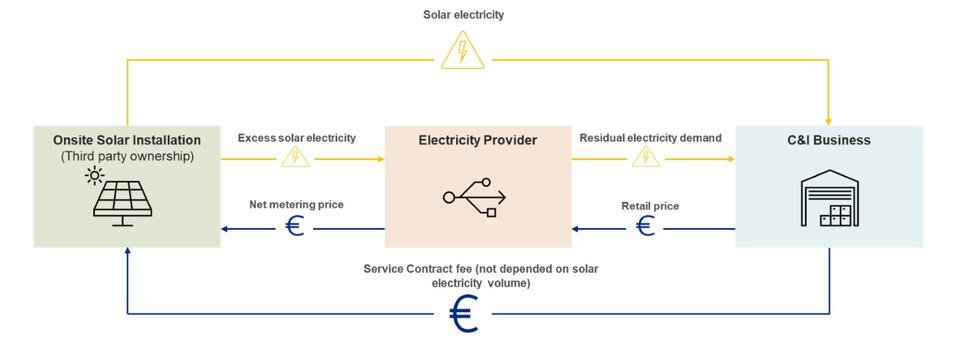Maximizing the potential of local generation: The value of onsite solar programs in the European market (Part 1)
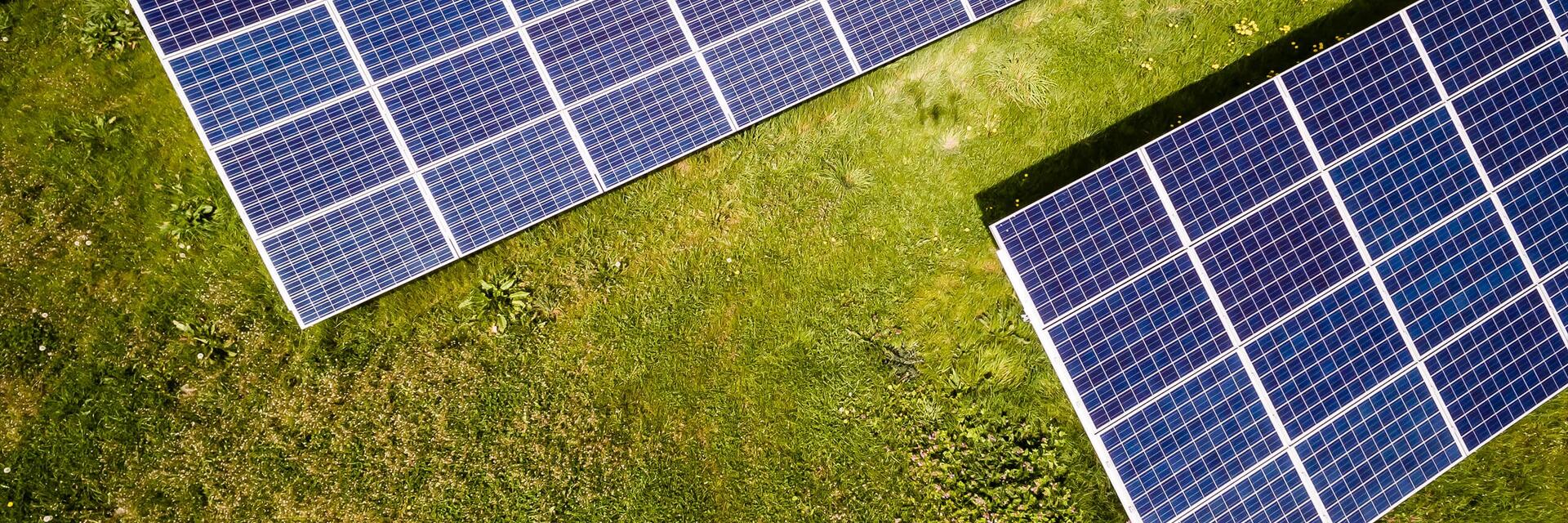
By Miltos Giannakopoulos, Manager, Distributed Clean Energy Advisory and Albina Abaspahic, Clean Energy Analyst
Introduction
Europe has developed ambitious climate targets, aiming to reduce its dependence on fossil fuels and bolster its energy security. Onsite solar installations have proved their value in supporting the region’s renewable energy strategy, offering both a technologically and financially viable green solution. Specifically, in the commercial sector, these behind-the-meter technologies can help businesses maximize their access to local green energy and achieve cost savings across their facilities.
In this article, we explore the different typologies of onsite solar installations, how they operate, and the main drivers and challenges in the European sphere.
Typologies
There are three main onsite solar typologies: rooftop, ground mounted and carport. Each system has its own benefits tailored to specific environments and energy requirements.
Rooftop
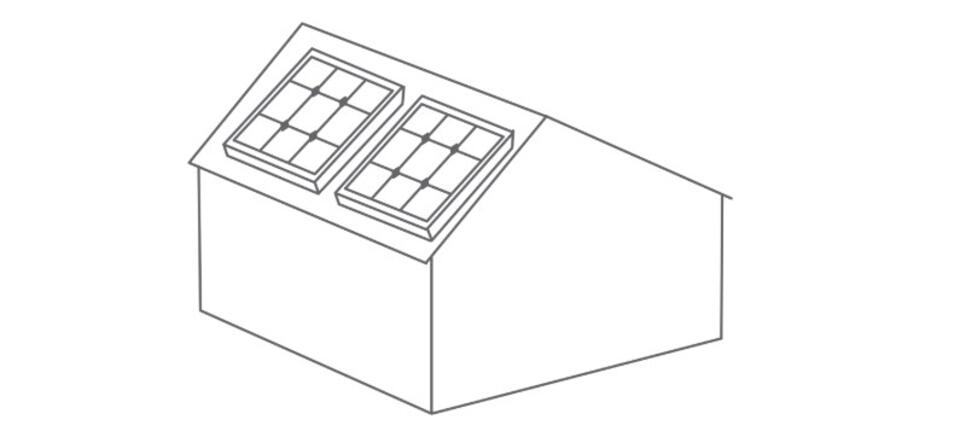
The solar arrays are placed on the roof of buildings, minimizing installation costs and reducing the need for extensive groundwork. Rooftop solutions are typically the most widely used onsite solar application, as they cause minimal disruptions to daily business activities - provided the structural integrity of the roof can support the additional weight from the panels.
Ground mounted

This type of system is installed on open land and designed to accommodate larger scale projects. It offers flexibility to position panels at optimal angles and orientations, maximizing solar exposure and, consequently, energy generation. However, ground- mounted solutions generally result in higher installation costs compared to rooftop typologies due to the extensive foundation work needed.
Carport
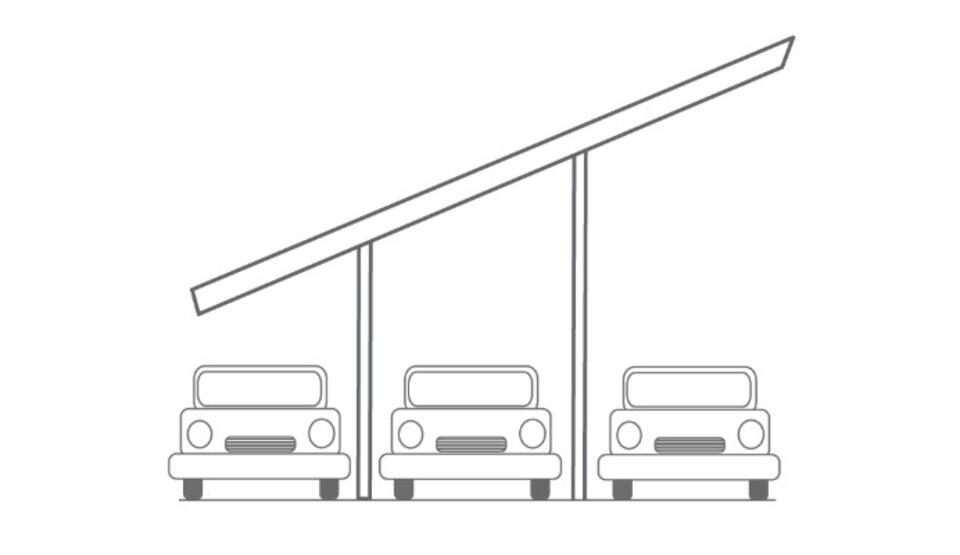
Carport structures serve multiple functions by generating renewable energy while offering shade and protection for parked vehicles. This system makes efficient use of parking or otherwise unused spaces, transforming them into valuable, energy-generating areas. However, a detailed analysis is needed to determine if these benefits can outweigh the generally high installation costs of such systems.
Contractual mechanisms
Implementing onsite solar solutions involves a contractual mechanism between the seller and buyer of electricity. The most common contract types are Engineering, Procurement, and Construction (EPC) contracts, Power Purchasing Agreement (PPA), and Service contracts.
EPC contract
In the EPC structure, the client decides to cover the capital costs for the installation while keeping the ownership. In this case, the client provides a significant upfront investment but can benefit from potential subsidies, tax reductions, and renewable energy certificates. In most projects, an experienced subcontractor is needed to undertake every stage of solar project development, from design to construction.
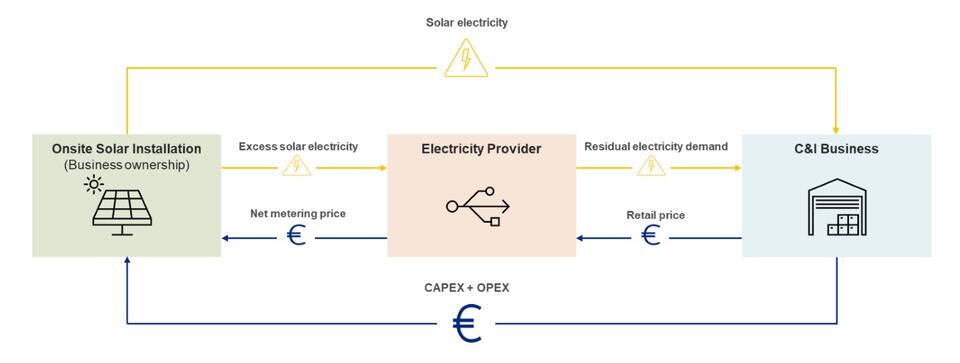
PPA contract
Under a PPA scheme, a third-party developer undertakes the installation and maintenance costs of the solar PV system on a client’s property while retaining ownership. The developer provides solar electricity to the client based on a pre-determined, consumption-based PPA price. This arrangement offers zero upfront costs for the client, as they only pay for the electricity consumed at a pre-set rate. PPAs usually last between 10 and 25 years, offering clients stable pricing that protects them from the volatility of the energy market.
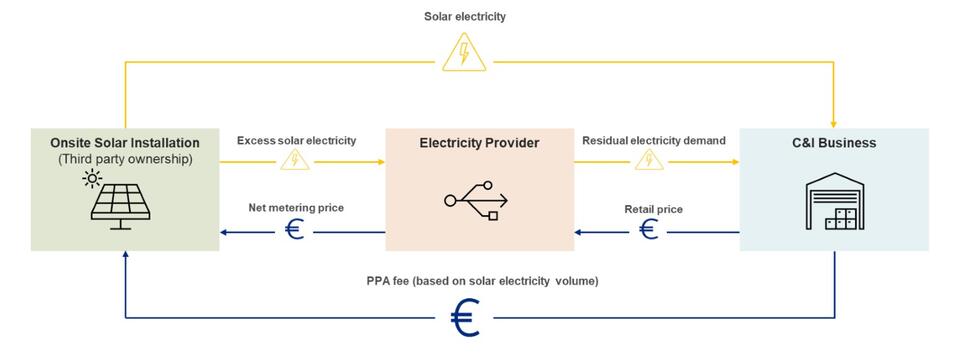
Service contract
In countries where a typical PPA scheme is not allowed or incurs additional taxes, a Service contract can be another zero-capital investment option for clients. This alternative follows the same concept as a PPA (zero upfront costs for the client and third-party ownership of the installation), with the key difference being that the price is a fixed or variable fee and not dependent on power volume.
